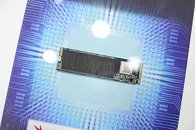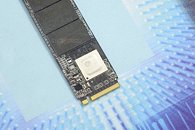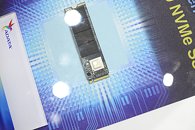Tuesday, May 28th 2019

ADATA Unveils its M.2 PCIe Gen4 SSD: Ready for AMD X570
It looks like SSDs will beat graphics cards to utilizing (and benefiting) from the bandwidth of PCI-Express gen 4.0 bus. AMD X570 platform motherboards offer 2-3 M.2 slots with PCIe gen 4.0 x4 wiring (64 Gbps). Corsair formally launched the MP600, and now ADATA joins the party with its unnamed drive. Based on the Silicon Motion SM2267 controller, the drive comes in an unbelievable capacity of up to 8 TB, probably using 96-layer QLC NAND flash.
The controller features DRAM cache, and dynamic SLC caching (all of the NAND flash is treated as SLC until storage demands force portions of them to be treated as MLC, TLC, and eventually QLC). It takes advantage of NVMe 1.3 protocol. As for performance, ADATA claims sequential speeds of up to 4000 MB/s reads. Such speeds were impossible of PCIe gen 3.0 x4 due to various overheads. Sequential writes are still up to 3000 MB/s. 4K random read/write access is rated at 400k IOPS. The company didn't reveal availability details.
The controller features DRAM cache, and dynamic SLC caching (all of the NAND flash is treated as SLC until storage demands force portions of them to be treated as MLC, TLC, and eventually QLC). It takes advantage of NVMe 1.3 protocol. As for performance, ADATA claims sequential speeds of up to 4000 MB/s reads. Such speeds were impossible of PCIe gen 3.0 x4 due to various overheads. Sequential writes are still up to 3000 MB/s. 4K random read/write access is rated at 400k IOPS. The company didn't reveal availability details.



23 Comments on ADATA Unveils its M.2 PCIe Gen4 SSD: Ready for AMD X570
Read speeds? i doubt it.
I miss the days of magazines, when there was an entire team of proof readers and editors...
Samsung SATA based 4TB models occasionally go on sale under 500€ so im expecting this 8TB model to cost around 1000€. Still too expensive. The capacity is getting up there but i can get a much more reliable and cheaper 14TB enterprise class HDD for 550€ this year and problably a 16-18TB option next year. Granted the SSD is faster but i doubt most will run OS from a 8TB SSD.